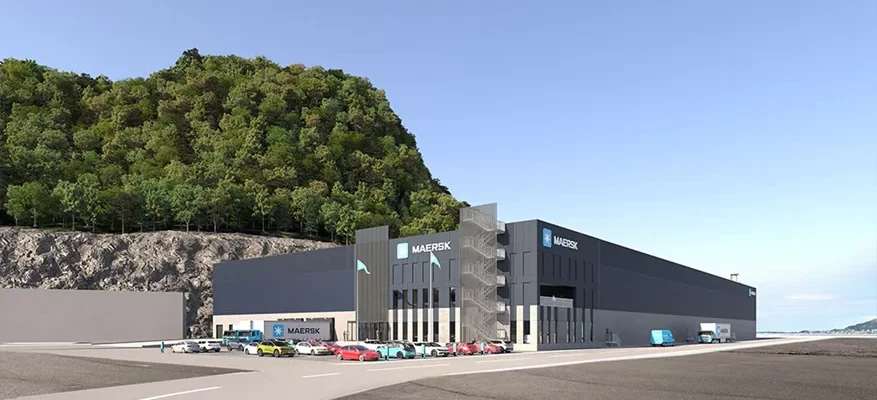The cold storage industry, a crucial component of the global cold chain logistics network, is under increasing pressure to reduce its substantial energy consumption and carbon footprint. Traditional cold storage facilities are energy-intensive, relying heavily on electricity to maintain the low temperatures required for preserving perishable goods. However, the integration of renewable energy sources into cold storage operations presents a promising pathway to sustainability, offering both environmental and economic benefits. This blog post delves into the innovative strategies and technologies facilitating the adoption of renewable energy in cold storage facilities, highlighting advancements not commonly discussed in mainstream dialogues.
The challenge of energy consumption in cold storage
Energy demands and environmental impact: cold storage facilities operate 24/7, maintaining temperatures as low as -20°c (-4°f) for frozen goods, leading to high electricity usage. The international institute of refrigeration (iir) estimates that the refrigeration sector accounts for approximately 7% of global electricity consumption, contributing significantly to greenhouse gas emissions.
Regulatory and market pressures: with governments worldwide implementing stricter regulations on energy efficiency and carbon emissions, cold storage operators face increasing pressure to adopt greener practices. Additionally, consumers and clients are demanding more sustainable supply chain practices, further driving the shift towards renewable energy integration.
Solar energy: a bright solution for cold storage
Harnessing the sun’s power: solar photovoltaic (pv) panels are becoming a popular choice for cold storage facilities looking to reduce reliance on grid electricity. Solar energy can either directly power refrigeration systems or offset a significant portion of a facility’s energy demands.
Innovative implementations: some facilities are combining solar pv with battery storage systems to ensure a continuous power supply, even during off-peak sunlight hours. For example, a cold storage facility in california has successfully implemented a solar-plus-storage system, reducing its grid electricity consumption by over 30%.
Wind energy: the untapped potential for cold storage
Leveraging wind power: while less common than solar, wind energy presents an untapped resource for cold storage facilities, especially in regions with consistent wind patterns. Wind turbines can supply electricity for refrigeration processes, significantly lowering operational costs and carbon emissions.
Case study: a pioneering project in the netherlands has demonstrated the feasibility of using wind turbines to power cold storage operations, showcasing a potential reduction in carbon emissions of up to 70% compared to conventional energy sources.
Geothermal cooling: a sustainable alternative
Ground-source heat pumps for refrigeration: geothermal cooling systems utilize the stable temperatures below the earth’s surface to cool buildings efficiently. By circulating a fluid through underground pipes, these systems can significantly reduce the energy required for refrigeration.
Emerging applications: although still in its early stages, geothermal cooling is gaining attention for its potential in cold storage facilities. A facility in iceland leverages geothermal energy not only for cooling but also to power the entire operation, setting a precedent for future developments.
Biogas: turning waste into energy
From organic waste to renewable power: cold storage facilities, particularly those associated with food processing, can capitalize on the production of biogas from organic waste. Anaerobic digesters convert waste products into biogas, which can then be used to generate electricity or heat for refrigeration processes.
Sustainable cycle: an example of this approach can be found in a facility in germany, where biogas generated from food waste contributes to more than 20% of its energy needs, creating a sustainable cycle of waste reduction and energy production.
Integrating smart technology for energy optimization
The role of ai and iot: advanced technologies, including artificial intelligence (ai) and the internet of things (iot), are critical for optimizing the use of renewable energy in cold storage facilities. Smart systems can dynamically adjust energy usage based on real-time data, ensuring maximum efficiency and minimizing waste.
Smart grid integration: facilities are increasingly integrating renewable energy sources with smart grid technologies, allowing for better management of energy supply and demand, and even selling excess energy back to the grid, further enhancing sustainability efforts.
Conclusion
The integration of renewable energy sources into cold storage facilities represents a pivotal shift towards more sustainable cold chain logistics. By harnessing solar, wind, geothermal, and biogas energy, alongside leveraging smart technologies for optimization, cold storage operators can significantly reduce their environmental impact while improving operational efficiency. As renewable energy technologies continue to advance and become more cost-effective, their adoption in cold storage operations is poised to grow, marking a critical step forward in the journey towards a more sustainable and resilient global food supply chain.


